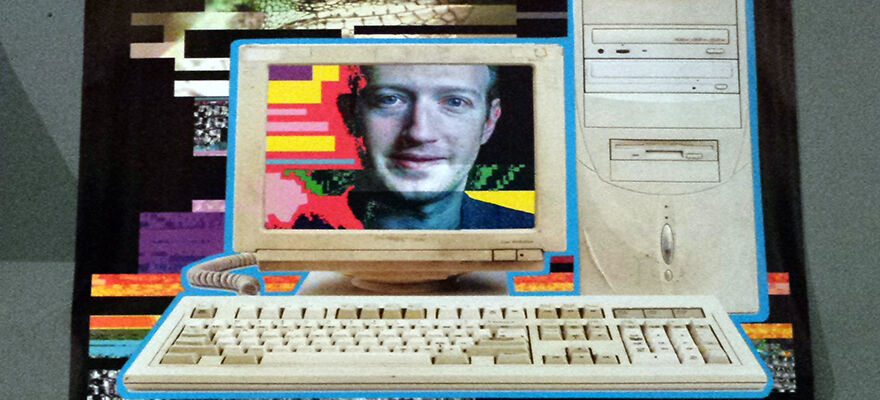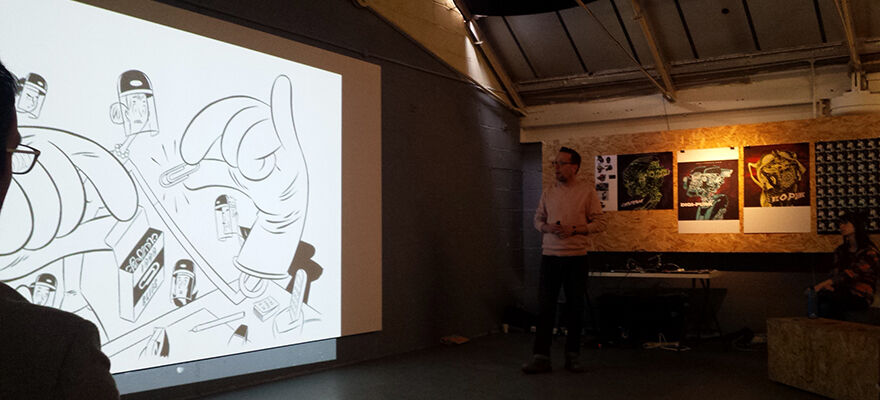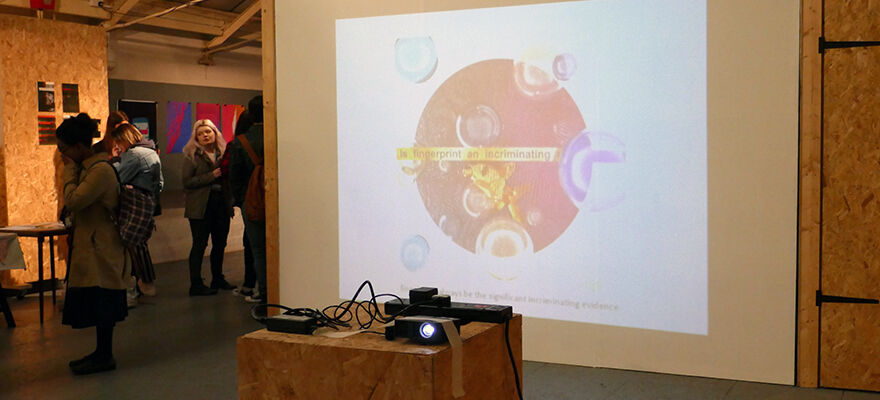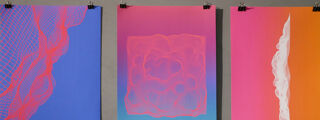Visual Communication students were invited to take part in a one-day open exhibition to celebrate all things digital at this year’s DigiFest.
From high-tech to low-tech to no-tech, the work on display included videos, animation, photographs, posters, sculptures, publications, illustrations and more, with many pieces touching on themes such as forensic, society and the hyper connected world.

The exhibition was held at Vivid Projects, an independent space in Digbeth, and included work submissions from students across our foundation, undergraduate and postgraduate courses, as well as from students at our partner institution in Hong Kong. Alongside the exhibition there were talks from high profile illustrators, Tim Vyner and Jason Ford, and alumni, as well as an exclusive preview of Europe Through the Windscreen, a performance piece that will be shown in its entirety at Flatpack Festival next month.

Europe Through the Windscreen, kicked off the symposium and was delivered by BA (Hons) Illustration Lecturer, Gareth Courage. The emotive piece told the story of his father’s trips to Europe in the early 1960s in his Austin Mini. It combined sound, motion graphics, film and tokens from his father’s travels to reflect and explore aspects of Birmingham’s social and industrial heritage, whilst also revealing insights into early European integration.
This was followed by a talk from Jason Ford, who gave students an overview of his character-based work. He showed examples of the range of illustrations he’s produced for companies such as Ben and Jerry’s, Penguin Books, The Guardian and The New Yorker, as well as more recent illustrations for The Super Book for Superheroes, an activity book that encourages children to draw.

Tim Vyner then went on to speak about his influences and how his work has enabled him to travel across the globe as a reportage illustrator. He explained how he had been fortunate enough to record the Olympic Games in Beijing, document the Mount Athos Monasteries, work for the Telegraph to illustrate the FIFA World Cup in Russia and document the Street Child World Cup in Moscow.
Both Jason and Tim noted that that technological advancement has impacted the speed at which they work. With news now being broadcast 24 hours a day, articles and accompanying illustrations are having to be turned around more quickly, which Tim noted isn’t necessarily a bad thing. He commented that short deadlines give him more focus and using technology such as iPads allows him to combine illustrations with photographs and audio files to be used in online publications.
Now in its second year, DigiFest is proving to be an ideal occasion for students to exhibit their work, network with high profile practitioners and meet potential collaborators. The event was organised by BA (Hons) Illustration Lecturer, Jo Berry-Frith, whose own work and love of digital technology and industrial process prompted her to create DigiFest. Commenting on why it’s important for students to be involved in exhibition opportunities such as DigiFest, Jo added:
It gives students confidence, a chance to try things outside of their comfort zone and see their work in an exhibition and professional context.

The exhibition was curated and promoted by students, so not only did they have to consider production and scale when displaying work, but it also gave them the opportunity to enhance their project management, collaborative decision making and marketing skills.
Find out more about the exhibition opportunities we offer and how you can develop your visual communication skills on our course pages, or by joining us at our next Open Day.





